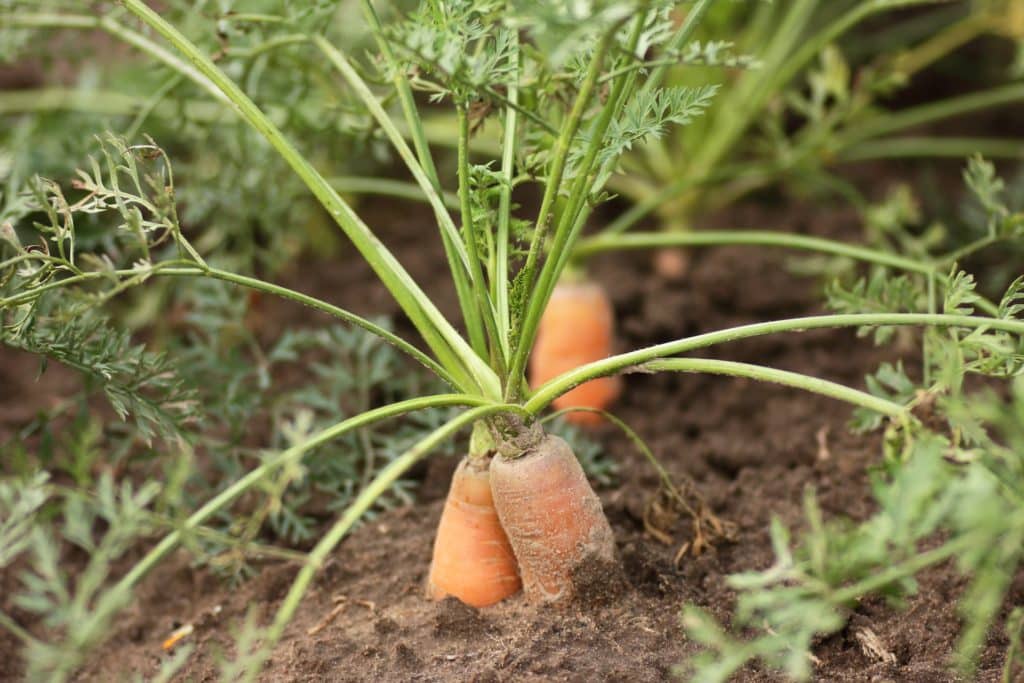What Is a Regenerative Food System and How Can It Help Reverse Climate Change and Increase Nutrients in Our Food?
By Tiffany AyudaHome » Live Consciously » What Is a Regenerative Food System and How Can It Help Reverse Climate Change and Increase Nutrients in Our Food?
As farmers around the world contend with climate change and the growing demand for food, a regenerative food system presents a solution. Regenerative farming—a relatively new eco-friendly movement you should know about—can increase food production and supplies while revitalizing the environment with farming and grazing practices that lead to healthier soil and cleaner water. Ultimately, it all translates to better food choices for all of us.
Regenerative farming is important because growing our food through agriculture accounts for 10% of U.S. greenhouse emissions, according to the Environmental Protection Agency (EPA). Agriculture alone is the largest source of methane emissions in the U.S.
On a global level, a February 2021 report by Chatham House and the UN Environment Programme (UNEP) found that our food system accounts for about 30% of greenhouse gasses and contributes significantly to biodiversity loss, which affects our food supply.
So when considering all of these threats to our planet, our food and our health, it makes sense that regenerative agriculture is gaining momentum and acclaim. By aiming to reduce greenhouse gas emissions and remove carbon dioxide from the atmosphere, it is helping to preserve, protect and enhance what we have.
Read on to learn more about how regenerative farming can help reverse climate change, make our food more nutrient-dense, and create opportunities for underserved communities.
“By avoiding excessive fertilizer use and taking advantage of legumes that can pull nitrogen from the sky to feed crops, farmers can reduce emissions associated with agriculture.”
How Regenerative Food Systems Can Help Reverse Climate Change
Regenerative agriculture is rooted in creating healthy soil because that not only boosts food production but helps keep carbon out of the atmosphere through something called soil carbon sequestration. While this doesn’t guarantee that stored carbon won’t be released into the atmosphere, regenerative agriculture can help motivate farmers to follow more sustainable practices when growing food.
“Regenerative agriculture builds on some principles—diverse crop rotations, continuous cover, careful use of inputs—that can help tackle climate change,” says Michael Wironen, corporate engagement director for food and water at The Nature Conservancy, a nonprofit dedicated to conserving the environment and promoting biodiversity.
“For example, by avoiding excessive fertilizer use and taking advantage of legumes that can pull nitrogen from the sky to feed crops, farmers can reduce emissions associated with agriculture. By keeping the soil covered with living plants year-round, carefully managing grazing animals, and integrating trees into croplands, farmers and ranchers can help remove carbon from the atmosphere and store it in oils and biomass.”
RELATED: What You Need to Know About Chlorpyrifos and Other Pesticides
In addition, regenerative agriculture can help us avoid converting native forests and grasslands into farmland because it restores productivity to the soil.
When comparing organic farming with regenerative agriculture, Wironen says that regenerative farmers may use synthetic inputs, which aren’t allowed in organic farming but make it easier to adopt regenerative practices.
“Others consider regenerative agriculture a further advancement upon organic agriculture. The Rodale Institute and partners have even developed a ‘regenerative organic standard,’” Wironen says, for instance.
Composting is another regenerative farming practice, which helps reduce methane emissions, because it sequesters carbon. And managing methane emissions has big implications for public health. According to a 2021 report by the UNEP and the Climate and Clean Air Coalition, a 45% reduction in human-caused methane emissions by 2030 would prevent 260,000 premature deaths and 775,000 asthma-related hospital visits, in addition to avoiding losing 25 million metric tons of crops and a 0.3°C of global warming by 2045.
Healthier Soil Means More Nutrients in Our Food

Regenerative farms produce crops with higher soil organic matter levels, soil health scores, and higher amounts of certain vitamins, minerals, and phytonutrients than conventional farms, according to a recent research article in PeerJ that compared soil health and nutrient density of food with conventional and regenerative farming.
Although this study was small and more research is needed to link soil health to our own health, it shows that regenerative farming practices can potentially improve the nutritional profile of our produce and livestock.
“Regenerative agriculture today actually stems from Black, Indigenous, and other communities of color that have been following regenerative food practices for thousands of years.”
What Are Regenerative Farming Methods
Unlike organic farming, there aren’t set rules for practicing regenerative farming, and there is much debate about what counts as “regenerative.” But it is built on a long history of farming practices, including agroecology (sustainable farming), conservation agriculture, indigenous agriculture, and organic agriculture, Wironen says.
Regenerative agriculture today actually stems from Black, indigenous, and other communities of color that have been following regenerative food practices for thousands of years, per The Nature Conservancy.
Regenerative farming is typically built around a few core principles, Wironen explains. These include:
- Crop diversity
- Permanent soil cover
- Minimal soil disturbance
- Careful management of nutrients
- Livestock integration (in some cases)
“For example, keeping the soil covered helps prevent weeds, retain soil moisture, and prevent moisture,” he says. “Using cover crops during periods when soil might be fallow can help sequester carbon and retain nutrients, while also preventing erosion and suppressing weeds.”
In addition, allowing livestock to graze on cover crops provides manure, which can be used as fertilizer, Wironen says. By keeping soil healthy, it can help increase food production, prevent deforestation, and protect grasslands. For instance, when regenerating grasslands, ranchers can limit cattle grazing for a certain amount of time or to only specific areas of the land.
Crop diversity also promotes biodiversity, which can be beneficial for fighting pests or pollinating crops, Wironen says.
A regenerative food system also includes sustainable aquaculture, also known as farming in water. This type of farming helps provide cleaner water and creates healthier habitats for marine and freshwater life while boosting the supply of fish and other seafood.
How Regenerative Agriculture Can Create Opportunities for New Farmers and Underserved Communities
Regenerative farming allows new farmers and people in underserved communities to take part in emerging markets for regeneratively produced food, Wironen says.
For example, New Farms for New Americans gives refugees and immigrants the opportunity to share and learn their regenerative farming practices and traditions, while growing food to feed and support their families. Save the Farm has a six-month training program for veterans to learn the ropes of farming and agriculture, and the Comunidad Maya Pixan Ixim’s Maya Regeneration Project teaches the Q’anjob’al Maya community regenerative agriculture techniques through their community garden, while giving them access to food.
Still, there’s a lot of work to be done when it comes to improving access to healthy, regeneratively produced food for the world’s poor, Wironen says.
What You Can Do to Support Regenerative Agriculture
There aren’t special labels on food products that indicate it was produced in a regenerative farm or fishery because there’s still widespread debate about what counts as regenerative, Wironen says.
However, consumers can take the extra step of educating themselves about brands that support regenerative agriculture and source their ingredients from regenerative farms.
“Where consumers are able to buy from farmers directly, such as at farmer’s markets, they can ask the farmers themselves what they are doing to adopt regenerative agriculture. Farming is quite complex, and sometimes labels and claims can try to mask this complexity and oversimplify things. If it sounds too good to be true, it probably is,” Wironen explains.
Some food brands that have shown commitment to regenerative agriculture are:
Regenerative farming is charting the path forward toward more sustainable farming practices, a healthier planet and a cleaner, more nutrient-dense food supply– all things we can support.
(Images: Shutterstock)
Tiffany Ayuda is a Brooklyn-based editor and writer who specializes in fitness, nutrition, health, and wellness. She has held previous editorial roles at Prevention, Eat This, Not That, Daily Burn, and Everyday Health.
DISCOVER MORE
RECENT ARTICLES

Want a sneak peek inside the program?
Get FREE access to some of the core training materials that make up our signature program – Become a Nutrition Coach.
Get Access"*" indicates required fields
 Live Consciously
Live Consciously













































































































































































































































































































































































































































































































































































































































































































































































































































































































































































































































































































































































































































































































































































































































